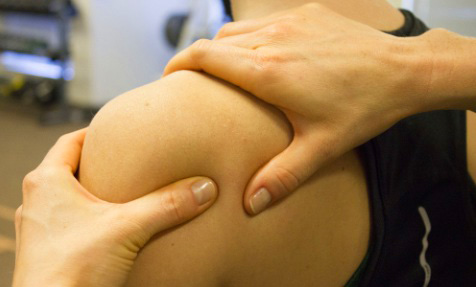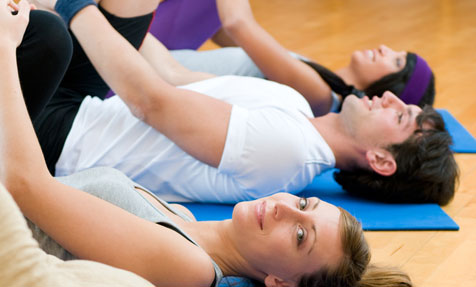Squatology 101 – Don’t have time to read the article – check out this video and learn a basic squat in 2 min
Joe takes us through the basic squat – how can so many people get it wrong!
Squatting is essentially just lowering your center of gravity and there are hundreds of different ways to do this. The most appropriate variation will depend on the individual context. The squat I would like to discuss today is a variation I believe is a safe, efficient and effective way to squat in a gym environment where the purpose is to lift heavy, repetitively or quickly in order to develop strength, endurance or power.
From this position simply reach your hips diagonally back and down as if towards the bottom corner of the room behind you. If you are not using weight it can be useful to reach your arms forward as a counter balance (figures 1 and 2).
Figure 1 Figure 2


On the other hand squatting so far forward that your heels lift completely off the ground puts unnecessarily large forces on the knees. Instead aim to be balanced between these two extremes with even pressure on the ground beneath the balls of the feet and the heels. A good way to find this position is to stop towards the bottom of your squat and shift your weight forward until your heels lift off the ground (figure 4) and then back until the toes lift (figure 5) and then shift your weight forward so that the toes are relaxed but so that the heels are still firmly grounded (figure 2).
Figure 3 Figure 4 Figure 5



The appropriate squat depth depends on your flexibility and coordination. If you attempt to go two low one of two things is likely to happen. Either you will lose the inwards curvature of your back (figure 6), which arguably in the context of a loaded squat isn’t ideal, or your ankles and knee will stop bending or even straighten as you continue to flex forward from your hip.
As a guide the angle of your torso should be close to parallel with that of your shins (note that this is different than a deadlift, which will require more torso and less lower leg angle). Simply lower as far as you can without the above or other technique flaws occurring and then return to the starting position. Make sure you fully return to a relaxed standing position (Figure 1).
Figure 6

In summary: place your feet shoulder width and pointing straight, reach your hips back and down while maintaining your weight over the center of your feet and then return to standing. We will discuss ways to load, progress, regress and add variation to this basic squat in future articles.
Shoulder pain month is happening right now at Physiologic – Shoulder pain is super common and it would easily be in the top 3 conditions we would see at Physiologic. It presents in a bunch of different age groups for a variety of reasons.

Obviously we can consider a range of other factors which might give a person shoulder pain but it seems that the one common thing we have found about treating shoulder pain is that massage usually relieves shoulder pain.
Or just ring 55787155 and our friendly girls will arrange it for you so that you are out of pain in no time!
The Physiologic Team
Hi Mums and Dads,
Its “look after kids month” at Physiologic.
We emailed you a great offer last week and with the end of April fast approaching we didn’t want anyone to miss out.
PhysioLogic physiotherapist and practice partner Mitch Davis is heading back for a life in his home town of Bundaberg. Mitch has made a massive contribution to the driving forces at PhysioLogic and we will miss him greatly.
We wish Mitch and family all the very best, while miles away now they will always be part of the PhysioLogic family.
I’m sure if the Davis clan get’s a taste for city life again in the future Mitch will be straight back in his PhysioLogic office right next to that squat rack!
For the months of September and October, refer a friend for an initial physio assessment consultation with Jess to receive a free pilates session (with Jess or Therese) for both you and your friend!
Pilates is a fantastic way to improve body awareness and posture, comfort and ease of movement through developing dynamic stability.
 The individual assessment consultation allows me to better get to know you, your movement patterns and injury history to consider during the classes which are tailored to the participants. Also, it qualifies you for using your private health during subsequent pilates sessions.
The individual assessment consultation allows me to better get to know you, your movement patterns and injury history to consider during the classes which are tailored to the participants. Also, it qualifies you for using your private health during subsequent pilates sessions.
Bookings are essential – limited spaces.
Monday 5:15-6pm (Therese)
Thursday 5:15- 6:00pm (Jess)
Saturday 8:00 – 8:45am (Jess)
Jess Lydiard and Therese Fossheim are experienced physiotherapists and pilates instructors who take pride in creating fun and functional classes catering to all ages and abilities.